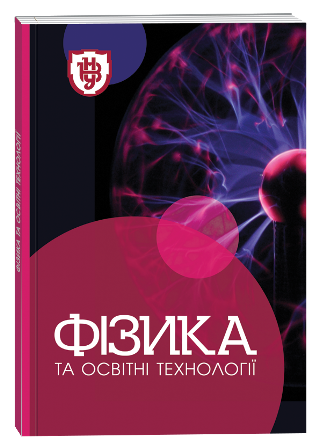INNOVATIVE LEARNING TECHNOLOGIES IN THE SYSTEM OF FORMATION OF SCIENTIFIC-ORIENTED EDUCATION
DOI:
https://doi.org/10.32782/pet-2021-2-6Keywords:
competence approach, STEM technologies, educational robotics, technical means of trainingAbstract
The significance of innovative technologies as a means of forming scientifically oriented education is analyzed. The task of science-oriented education is to form a system of education based on the competence approach. The concept of educational model based on pedagogical technologies, which are based on independent acquisition of knowledge with the result reflected in practical, research, design or design and technical activities, is substantiated. The importance of these aspects for students' education on the basis of STEM technologies is growing, so the problem of forming the scientific component of education on the basis of the latest educational technologies and modern technical means is relevant. The aim of the article is to analyze the possibilities of innovative technologies (including STEM) in the process of training future teachers of physics, computer science and technology in the formation of a scientifically oriented educational environment. One of the directions of STEM implementation is singled out – educational robotics – a new learning technology that allows to interest the engineering creativity of children from primary school age. It is argued that the study of students (future teachers) of the basics of robotics and technical design contribute to the formation of knowledge of graphic programming, skills of designing robot models and their use in educational physical experiment, construction and software implementation of algorithms. It is envisaged that the results of such work will increase interest in the study of natural sciences, improve the development of educational and scientific fields.
References
Кузьменко О.С. Теоретичні і методичні засади навчання фізики студентів технічних закладів вищої освіти в контексті розвитку STEM-освіти : монографія. Кропивницький : КОД, 2018. 624 с.
Мартинюк О.С. Вивчення основ мікроелектронної схемотехніки в системі фахової підготовки студентів-фізиків. Вісник Чернігівського державного педагогічного університету імені Т. Г. Шевченка. 2013. Вип. 109. С. 201–204.
Мартинюк О.С. Засоби графічного програмування у формуванні інформаційної компетентності майбутніх учителів фізики. Збірник наукових праць Бердянського державного педагогічного університету: Педагогічні науки. 2009. № 3. С. 177–181.
Мартинюк О.С. Інноваційні напрямки STEM-технологій у системі формування науково орієнтованої освіти. Неперервна освіта в модусах минулого, теперішнього, майбутнього : матеріали всеукр. наук.-практ. конф. з міжнарод. участю (м. Луцьк, 24–26 травня 2018 р.) / уклад. В. О. Савош. Луцьк : Вежа-Друк, 2018. С. 112–114.
Мартинюк О.С. Проблеми та перспективи підготовки фахівців у галузі освітньої робототехніки. Збірник наукових праць Бердянського державного педагогічного університету: Педагогічні науки. 2015. Вип. 2. С. 167–178.
Мисліцька Н.А., Заболотний В.Ф. Вивчення загальних питань методики навчання фізики в умовах сучасної парадигми освіти. Вісник Чернігівського національного педагогічного університету. Серія: Педагогічні науки. 2017. Вип. 146. С. 66–69. URL: http://nbuv.gov.ua/UJRN/VchdpuP_2017_146_16 (дата звернення: 08.07.2021).
Паламарчук В.Ф. Першооснови педагогічної інноватики : у 2 т. Київ : Знання України, 2005. Т. 1. 420 с.
Сусь Б.А., Шут М.І. Проблеми дидактики фізики у вищій школі. Вид. 2-е. Київ : Просвіта, 2003. 155 с.
Getting Started with Arduino products. URL: https://www.arduino.cc/en/Guide (дата звернення: 08.07.2021).
Teaching robotics with an open curriculum based on the e-puck robot, simulations and competitions URL : www.innoc.at/fileadmin/user_upload/_temp_/RiE/Proceedings/21.pdf (дата звернення: 08.07.2021).








